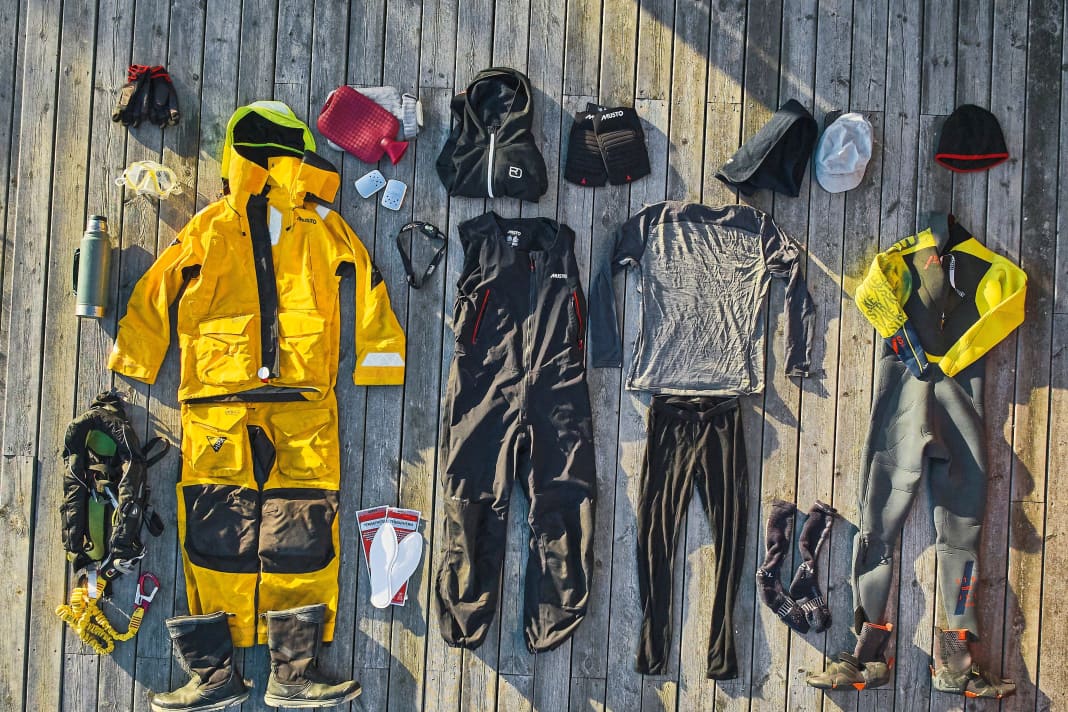




Climate change is bringing us higher temperatures earlier and earlier. If the boat is already in the water at the beginning of March, the season can be significantly extended. But be careful. Cold snaps are still possible this early in the year.
Those who have the right clothes are well equipped. In this article, we explain what is important when it comes to good clothing.
The good thing about it: the often not quite cheap clothing can also be used in winter. As winters tend to remain ice-free: put on the right clothes and head out to sea! Whether for a few hours, days or even weeks - this change of perspective can do wonders to brighten your mood against the winter doldrums and create soothing clarity of mind.
True to the Norwegian proverb: there is no such thing as bad weather, only bad clothing.
Functional clothing: dry and warm
Staying dry and warm is the top priority and essential for safe and enjoyable sailing outside the summer season. Unlike our nautical ancestors, who rounded the capes or pulled fish out of the North Sea in sheepskin pants and jumpers, linen shirts, caps and tarred jackets (hence the term "oilskins"), today we have a wide range of functional clothing for weather protection at our disposal. If you go to sea, you can dress yourself in high-tech textiles from specialised maritime shops and the entire outdoor industry and sail the Northwest Passage or the Antarctic without getting goose bumps.
This can be a sensible, albeit expensive, investment. However, there's no need to blow a huge hole in the on-board budget for an autumn trip, because the basic idea for a warm and dry "out of season" sailing experience is very simple and can be realised piece by piece with existing sailing clothing: with the layering principle. This idea of layering many items of clothing with different materials and properties has proved very successful in all outdoor areas and is also known as the onion principle.
The onion look
Here, textiles made from a wide variety of materials and thicknesses are put on top of each other, similar to the individual layers of an onion. The advantage of this type of clothing is that body heat can be optimally stored, while at the same time moisture is transported away from the body and outwards in the form of water vapour. In theory, three layers of textile are sufficient for this, but in practice you can experiment with additional layers depending on how cold you feel, the outside temperature and wind strength. It is important to consider the specific properties of the textile fibre and to wear the material close to the body or as the outermost layer, depending on its properties.
Functional clothing: The baselayer
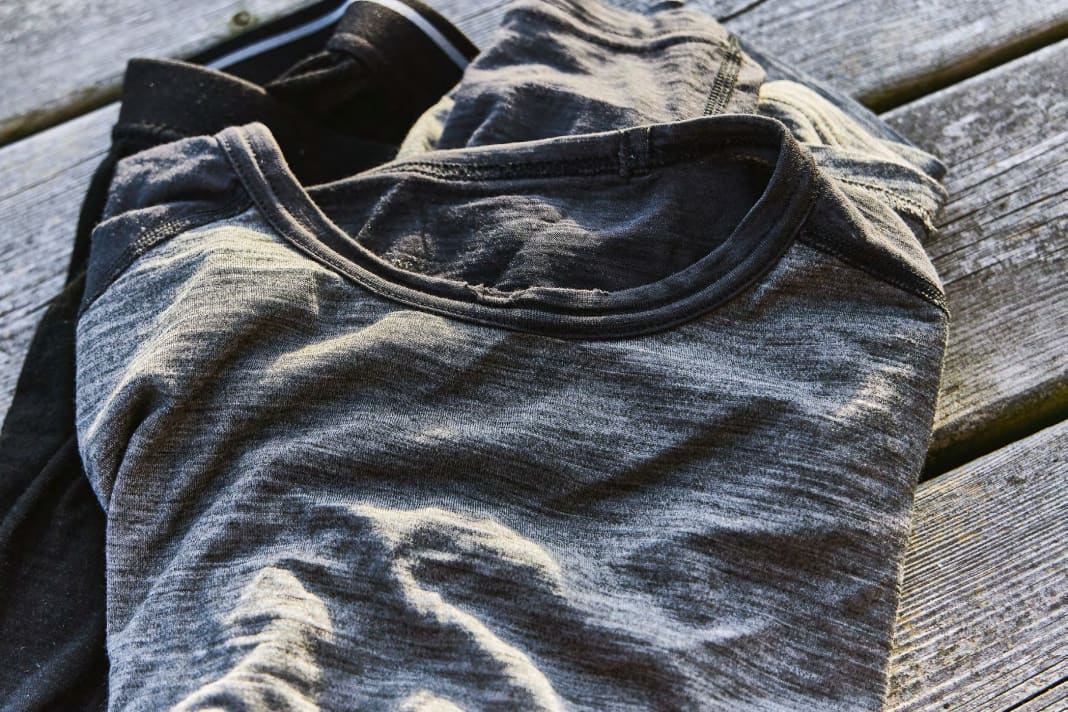



The base layer should be a close-fitting, thin textile that wicks moisture away from the body (Functional underwear). Manufacturers use a material made of polyester or polypropylene for this, but wool, and merino sheep's wool in particular, has also been in demand for some years. It combines the advantages of being warm, odour-inhibiting, moisture-wicking and quick-drying. Compared to the synthetic variants, merino wool is still highly effective at keeping you warm even when it is wet. The reason: wool can absorb up to 30 per cent of its own weight in moisture and still be cosy and warm. The natural material also prevents unpleasant odours on the body, as sheepskin has natural antibacterial protection. The smell of sweat doesn't stand a chance. An advantage for the whole crew.
Whether high-tech synthetic fibres or wool products are worn next to the skin is decided by subjective comfort, the on-board budget and medical aspects such as allergies. Cotton is definitely not suitable as a base layer. Although this fabric can absorb body fluids, it does not allow them to be transported to the outside. The result: the body remains wet and cools down in the medium term, guaranteeing maximum discomfort.
Functional clothing: The midlayer
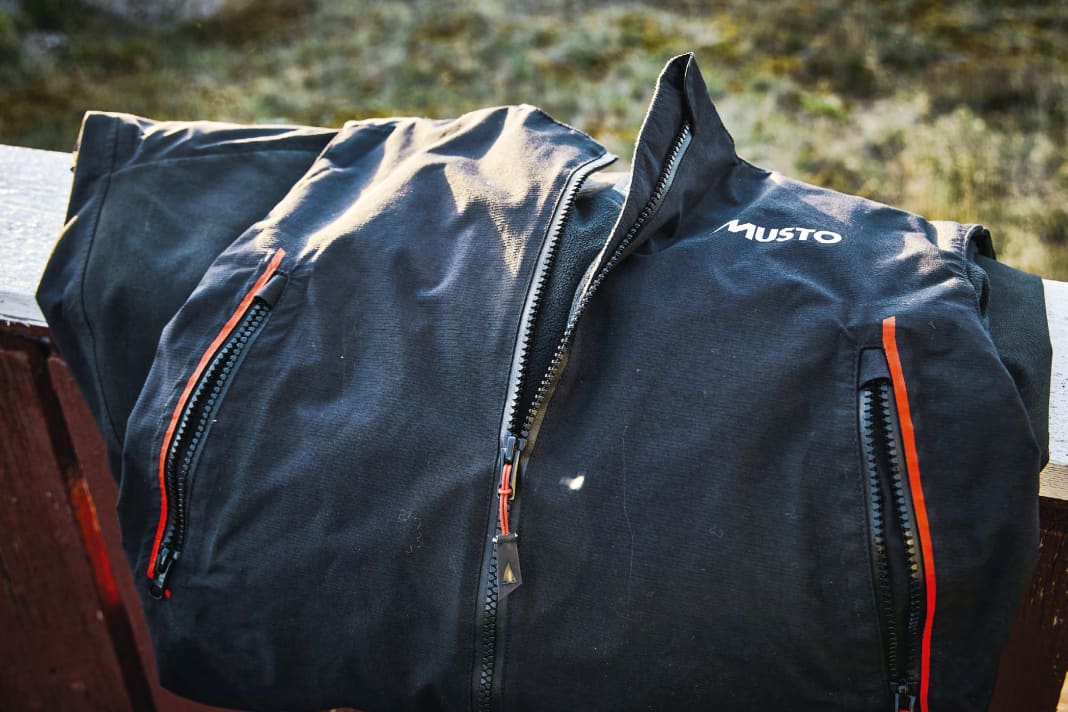



The insulation or warmth layer (mid-layer, softshell) is designed to keep the inner warmth in and keep the outer cold out. It must also be able to wick away moisture from the base layer to the outside. Suitable materials for this are fleece, merino wool or synthetic fibres in the form of a jacket or jumper, often with an integrated hat.
Fleece is the most widely used material on the market. Clothing made from the synthetic fibre polyester has many advantages for use as a mid-layer: it does not absorb water or moisture, is warm, lightweight and highly resistant. The ease with which polyester can be processed means that manufacturers have plenty of scope to offer fleece in different shapes, styles and thicknesses. There are even fleece garments that are made sustainably from recycled PET bottles or old clothes. The only disadvantage is that odours can quickly become unpleasant due to the build-up of bacteria caused by perspiration.
Wonder fabric merino wool
Merino wool has therefore also Midlayer Merino wool has gained great importance and is often referred to as an all-rounder among natural fibres. Compared to normal wool, the merino version is almost scratch-free due to its finer structure, and the water-repellent effect is greater due to increased wool grease formation, while at the same time being lighter in weight. There are now also manufacturers who process wool fibres with synthetics into a single fabric in order to achieve a better fit and stability.
Another material option for the warming middle layer is down, albeit made from synthetic fibres. Real down clumps together when damp and cannot provide any warmth, while the thermal insulation of the synthetic replica made of microfibre remains very high even in high humidity. As with goose down, the imitation has a three-dimensional construction plan. The weight and density therefore remain very low, while the material's airiness and thermal performance make it very comfortable to wear.
Functional clothing: The Hardschell
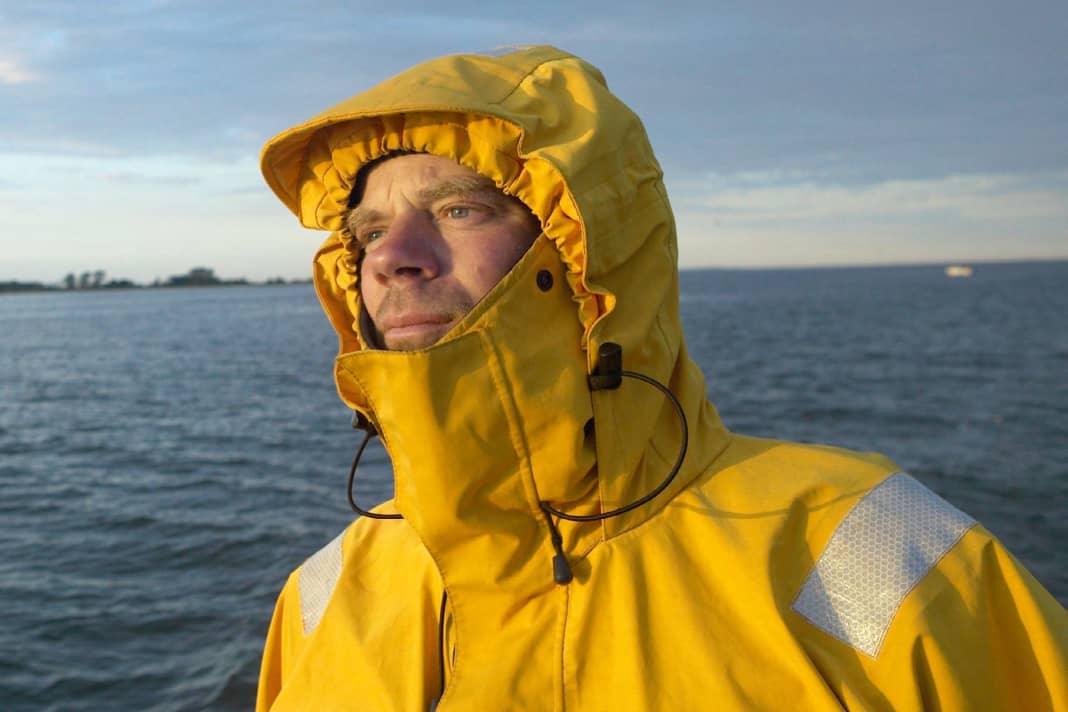



The weather protection (hardshell) as Jacket and Trousers is the outermost layer, which must wick body moisture and condensation (water vapour) outwards, but at the same time must not let moisture and wind in. What sounds like squaring the circle is now possible in modern textile production. The magic word is "breathability" and is achieved through membranes that are laminated onto the outer material. Various membrane technologies are available on the market (Gore-Tex, Texapore, Sympatex, etc.) and provide almost complete protection in various ways against water molecules penetrating in rain, melting snow and seawater. At the same time, there is effective water vapour permeability, which enables moisture to be transported away in the form of air molecules.
Hardshell jackets and trousers are available in various designs: Three-layer material consists of an outer fabric, the membrane and the inner material so that the membrane is protected. The layers are laminated together in such a way that they act as a single element and offer advantages in terms of wearing comfort. Two-layer material consists of the membrane and the outer material laminated into one fabric. The protective, fine-meshed fabric on the inside is not bonded to the outer material, which gives the impression of more volume, but in fact does not improve the properties compared to the three-layer version.
Depending on the intended use and place of use, the surfaces of the hardshell layer are made differently robust, each manufacturer uses its own special material and design concept.
This also applies to the cuffs on the arms and legs, where neoprene cuffs or Velcro fasteners are used to prevent the ingress of water.
Seams are largely dispensed with in modern clothing systems, as they would allow water to find its way in at the needle puncture points like a small leak. For this reason, the components are glued or welded with film instead.
Conclusion: There is no such thing as "the" perfect clothing for sailing in the cold season. Rather, various components contribute to a warm and dry result. The onion-skin principle allows great flexibility to react to changes in temperature and weather conditions. Even in the case of short-term but sweat-inducing work, such as reefing, sail recovery or an anchor manoeuvre, you can quickly adapt to changes in body temperature by removing a textile layer. Basically, the mid-layer plays the key role in this clothing strategy, as the weather protection (hardshell) should always be worn at low temperatures to keep out wind and water.
Functional clothing: protection for hands and feet
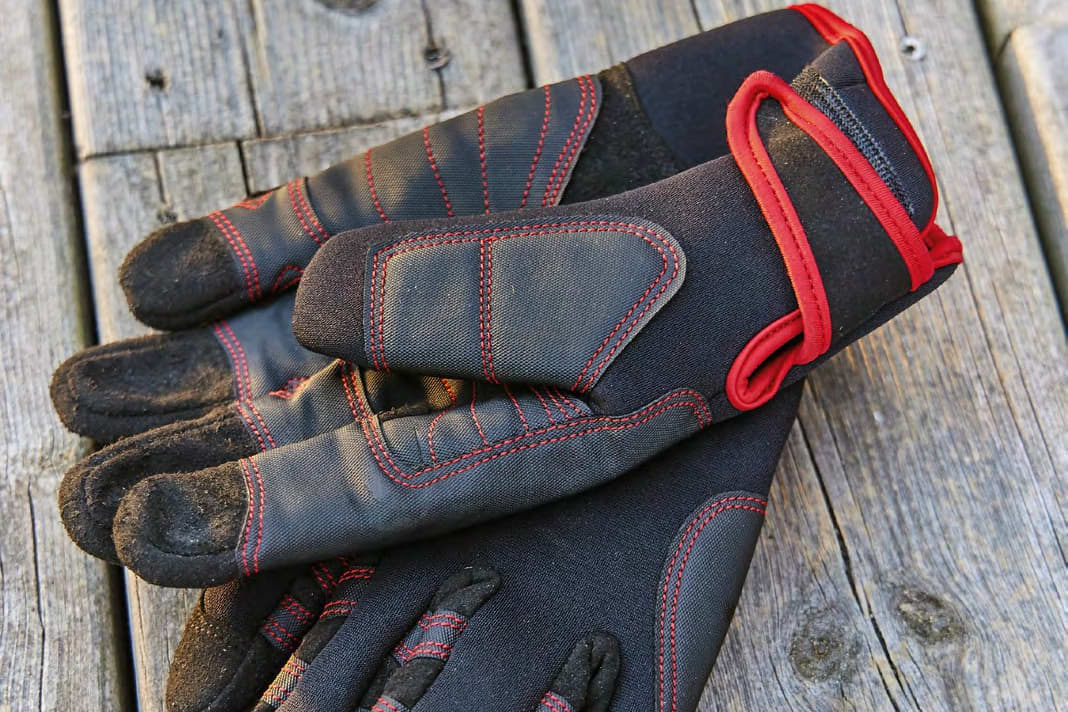



An unprotected head, hands or feet cause large heat losses, which is why Hats, headbands, scarves and gloves They are far more than just fashion accessories and their function is essential for a winter cruise. People can lose up to 50 per cent of their body heat through their head. This is prevented by a hat or headband (e.g. fleece), as well as the hood and neck flap of the hardshell jacket. Neoprene gloves are a good choice for cruising sailors when handling anchor chains, mooring lines or sheets. Water-repellent mittens, on the other hand, are a cosy option when steering or during the free watch in the cockpit.
The sea boots made of breathable materials ensure good grip on deck and warm and dry feet. The size should be chosen so that there is room for thick socks and warm soles. When sitting in the cockpit for long periods, insoles or disposable heat pads support the body's temperature balance with active heat.
On longer trips, practical hand warmers that run on petrol, activated charcoal, water or electricity can keep the crew's fingers warm. The classic hot water bottle is also always a good companion: tucked between layers of clothing, it provides cosy warmth for at least an hour. Long-lasting warmth is also provided by heat patches with the active ingredient of chilli and essential oils (be aware of allergic reactions), which are applied directly to the skin.

